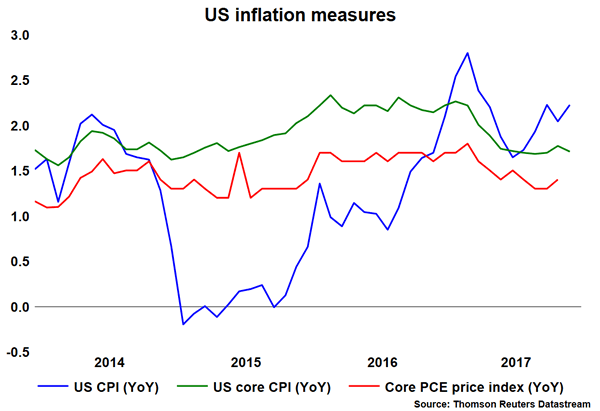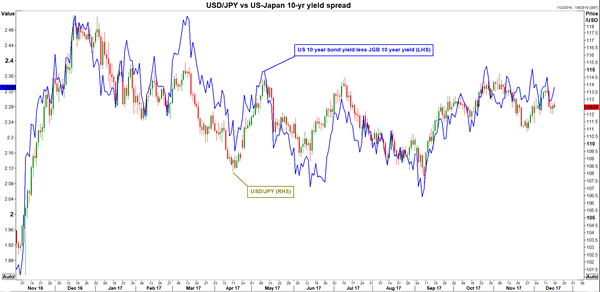The US dollar plummeted in 2017, but that may not necessarily continue in 2018. The Fed seems set to undergo a hawkish shift in voting rights, while the Republicans are on the verge of implementing the highly-anticipated tax package. Although these factors could provide some support for the greenback overall, the currency’s fortunes may also depend to a large degree on the performance of its major counterparts, such as the euro and the yen.
It is not hyperbole to say that 2017 has been a harsh year for the US dollar. Even though the greenback started the year at very high levels – buoyed by expectations that massive fiscal stimulus would stoke inflation – it quickly gave back its gains to finish the year notably lower against a basket of currencies. Will 2018 be any different?
Broadly speaking, the dollar’s direction will likely hinge on two deciding factors: the pace at which the Fed continues to normalize policy, and on whether the Republican tax overhaul will finally be enacted. Kicking off with the Fed, the composition of voting rights within the FOMC will change drastically in 2018. The Committee appears set to become slightly more hawkish, as ultra-doves like Kashkari and Evans are set to lose their voting rights, while notorious hawks such as Mester are due to become voters. The "wild card" here is who Trump will nominate as Fed Board Governors. There are currently three vacant Governor seats, which will increase to four once Yellen leaves in February. His choices could be a major driver for the USD next year, as Board Governors are permanent FOMC voting members.
With regards to rate hikes, the December "dot plot" suggests the Committee is set to deliver 3 quarter-point increases in 2018, while the market has priced in slightly less than 2, according to the Fed fund futures. Thus, the point of interest for the dollar is whether the market will gradually move closer to the Fed’s forecasts and price in another hike, or whether the Fed will revise down its own rate path and come closer to market pricing. Although a lot will depend on incoming economic data, the hawkish shift in FOMC voting rights supports the case for investors to gradually price in an additional hike.

Turning to tax cuts, the "heavy lifting" seems to be over, after both the House and the Senate passed their own versions of the tax bill. Having worked out the differences between their two plans in recent days, all that remains now is for the two chambers of Congress to vote on the final version. The critical question for the USD is to what extent such a bill would push US yields higher, and how much of that is priced in already. The fact that the Republicans can only afford to lose 2 votes in the Senate suggests that this is not a done-deal yet, especially so because some Republican Senators still appear to be undecided (Susan Collins, Jeff Flake, Mike Lee). Therefore, most of the "good news" may be factored in already, but one still can’t rule out a surge in the USD should Congress vote the tax bill into law, as uncertainty over the US fiscal outlook fades. On the other hand, in the unlikely event that Congress rejects the bill, that would likely come as a major surprise given the heightened expectations for a tax overhaul, and could thereby lead to a significant drop in the dollar.
Overall, the greenback could recover somewhat in 2018, though it might not be ready for a major healthy uptrend. Instead, the currency’s performance may depend to a significant degree on the performance of its counterparts as well. For instance, euro/dollar may head a little lower in early 2018 on the back of the tax package in the US and resurfacing political risks in Europe. However, the cross could in the end finish 2018 higher, as any USD strength due to Fed hikes is likely to be overshadowed by euro gains – should the ECB proceed with an end to QE in late 2018 and a signal for higher rates in 2019. A much better proxy for potential USD gains in 2018 may be dollar/yen. The BoJ is expected to continue to keep the yields on longer-dated JGBs fixed near 0%, while the Fed could even deliver more rate hikes in 2018 than the market currently anticipates. The widening spread between US and Japanese yields would argue in favor of a higher dollar/yen over time, conditional upon the BoJ keeping its policy framework untouched.















